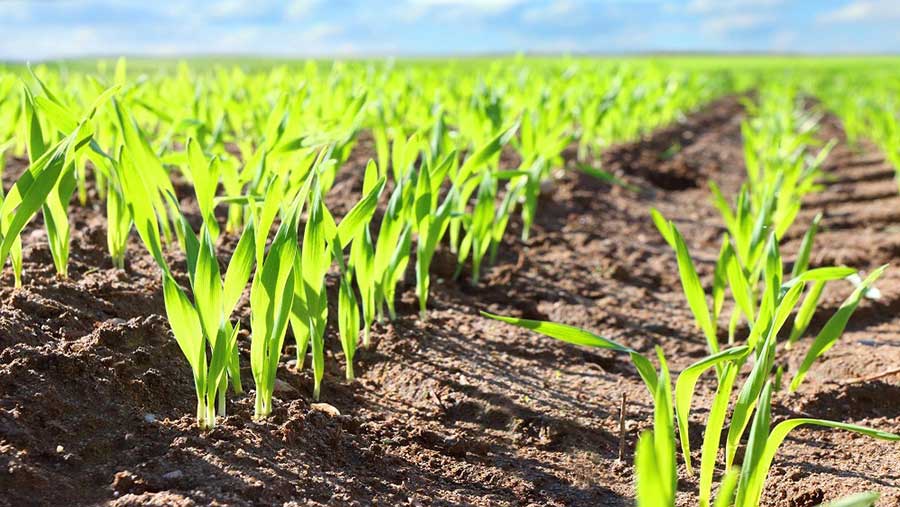Advertiser content
Return on your investment from Revystar® XE
Investment in Revystar® XE (mefentrifluconazole + fluxapyroxad) brings economic value, regardless of variety, nitrogen applied and season, making it the product of choice to allow winter wheat crops to achieve their potential.
With these crops now almost halfway through their lifecycle, a substantial outlay in terms of money, time and effort has already been made.
With proven and trusted Revystar® XE as part of your fungicide programme, a return on investment is ensured whatever the season brings.

© BASF
Disease risk
Fine autumn conditions have exacerbated the Septoria risk this season.
Steve Dennis, head of business development, said: “Many crops were drilled earlier than usual and data from 25 trials over five years has shown that every variety’s effective septoria resistance rating on the AHDB Recommended List (RL) is decreased by 0.6 points where crops are drilled two weeks before 7thOctober.”

Steve Dennis, Head of Business Development, BASF © BASF
The warm autumn weather has also played a part.
“At the end of January we were 90 degree days warmer than [the] 20-year average, which is comparable to drilling 7-10 days earlier.
“This too will have an effect on septoria resistance rating compared to what you might expect for a certain drilling date,” explains Dr Rebecca Joynt, senior plant pathologist Adas.
Dose rates and disease resistance
With the baseline level of septoria quite high in many crops, Revystar® XE is the product of choice and growers should consider the most economic dose to apply.
Mr Dennis said: “Adas trials in 2021 showed that yield response is consistent between different dose rates of Revystar® XE, independent of what the resistance rating is.
There were significant increases in yield even with the strongest genetics when dose rates of Revystar® XE were kept up.”
“Even as varietal resistance increased, the optimum dose doesn’t go down very rapidly and when the most tolerant variety in the trial, KWS Extase, was tested in a one-spray programme the optimum dose was 1.125 l/ha.
“Irrespective of variety, there are still significant increases in yield to be had by keeping the dose rate of Revystar® XE up, which mitigates increased disease risk.
The recommended T2 dose rate of Revystar® XE is 1l/ha and it will cope with whatever this season brings.”
Nitrogen and septoria level
With nitrogen prices high, some growers are considering reducing their application rate
A reduction of 50 kgN/ha has been found to have little effect on septoria levels in both low to moderate and high disease pressure situations, and there is no evidence that reducing nitrogen rates by these levels alters the optimal fungicide strategy.
Economic value regardless of variety, nitrogen rate and season
Dr Jon Helliwell, business development manager, BASF, used data from a 2022 ADAS trial in a crop of Gleam (R.L. 5.7 rating for septoria) in a low to moderate disease pressure situation to explore the effect of applying Revystar® XE across different levels of nitrogen input on return on investment.

Dr Jon Helliwell, Business Development Manager, BASF © BASF
He said: “As the level of nitrogen increased, the yield increased right up to commercially relevant doses of nitrogen in plots untreated with fungicide, illustrating there is a key role in nitrogen to build gross margin and yield in a low to moderate disease pressure situation.
“We found that for every dose of nitrogen, an increased dose of Revystar® XE increased gross margin, which shows any reduction in the nitrogen rate does not have an impact on the most economical dose on Revystar®XE.
“In this trial on Gleam, investment right up to a full label dose of Revystar® XE at T2 continued to improve economic return.
“So, regardless of the rate of nitrogen that growers apply to their crops, there is a value to investing in Revystar® XE in terms of economic return. Our work over the past 2 seasons with Adas has illustrated this.
“It was found that in the high disease pressure situation of 2021 there was a key benefit of stepping up to Revystar® XE over Ascra® Xpro (prothioconazole, bixafen and fluopyram) across all doses of nitrogen.
“In 2022, when disease pressure was low to moderate, when focussing on optimising Revystar® XE dose there was increasing profit right up to full label dose.”
Disease pressure at T2
If disease pressure feels low when T2 is applied it doesn’t follow that it will remain low.
Revystar® XE has a proven track record of mitigating disease risk and delivering yield while giving a return on investment even in the face of uncertain variables.
Flexibility to deal with variable flag leaf emergence
Weather is variable, and recent research by Niab Tag has shown that flag leaf emergence within a winter wheat crop is too.
Mr Dennis said: “There was a gap of 10-14 days between first and last flag leaf emerging for any given variety in the same field, making pinpointing the right day to spray exceptionally difficult.
“This is where Revystar® XE’s flexibility comes into its own.
“Revystar® XE is proven to have strong curative activity and so growers are able to wait for full emergence of the flag leaf.
“However, Revystar® XE can be used earlier if growers choose not to wait for full flag leaf emergence as its curativity on lower leaves is proven to reduce movement of disease up the canopy.”
Revystar ® XE’s proven reliability and flexibility allows growers to be confident it will deal with whatever the season brings when used in a suitable disease control programme.
Find out more about Revystar® XE
For more information about Revystar® XE and to hear grower experiences, please visit our website.
Provided by
BASF offers renowned and innovative fungicides, herbicides, insecticides and growth regulators for agriculture. Our products and services help farmers increase their yields and optimize the quality of their products.
